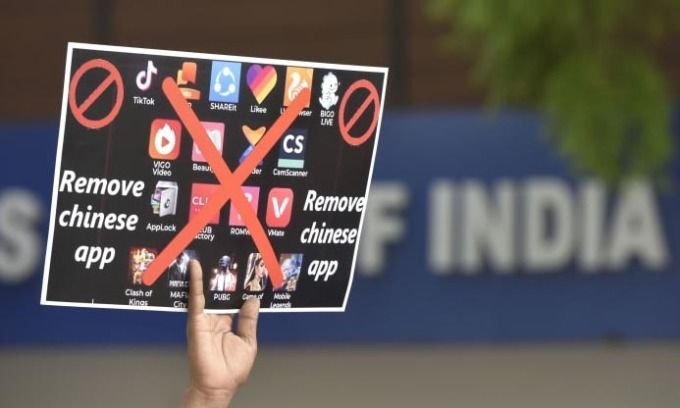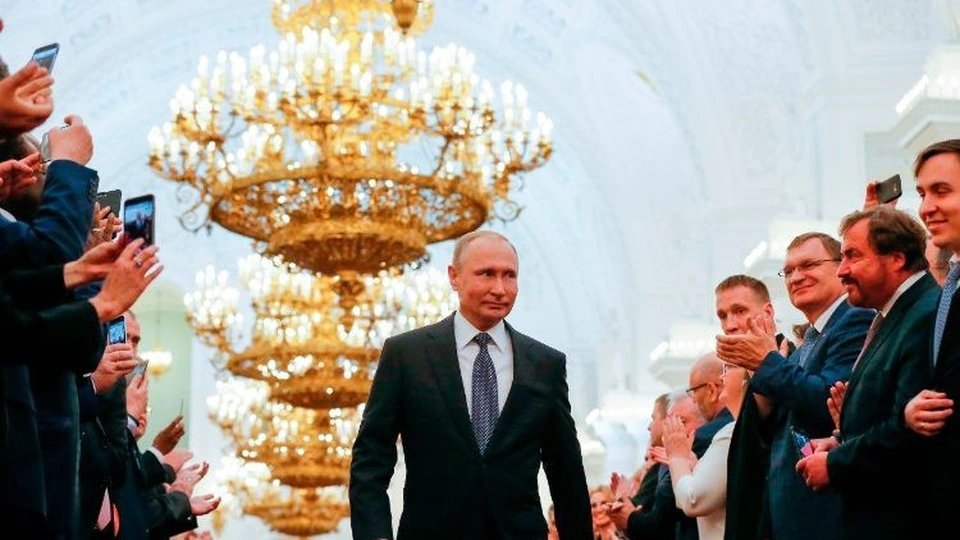
The clash between India and China soldiers in the disputed border area in the Himalayas on June 15, killing 20 Indian soldiers, sparked anger in this country.
`Anger` from the public puts Prime Minister Narendra Modi’s government under pressure to respond strongly to the neighboring country, even as the military commanders of both sides are negotiating to cool tensions.
However, experts say that New Delhi’s determination to `break` with Beijing is unlikely to succeed, when all data show China’s influence in India in the fields of trade, investment and
A person holds a poster calling for a boycott of Chinese smartphone applications in New Delhi, India, on June 30.
India has an unbalanced trade relationship with China, its second largest trading partner, after the US.
As a result, New Delhi has a trade deficit of more than 48 billion USD with Beijing.
India imports both intermediate and finished goods from China, including machinery and electrical equipment, consumer electronics, chemicals, pharmaceuticals and electronic components.
`Reducing dependence on Chinese imports is easier said than done,` said Kunal Kundu, an Indian economist at financial group Societe Generale.
Kundu explained that India can produce most of the goods imported from China on its own.
However, this vision takes a long time to materialize.
Kundu added that India’s inadequate integration with the global supply chain also means companies leaving China will look elsewhere for factories.
`India’s ability to increase investment attraction lies in the medium and long term prospects. But in the short term, it can promote various free trade agreements with other Asian countries, the European Union
The next factor that binds New Delhi and Beijing is that Chinese investment in Indian companies has grown steadily in recent years.
Chinese investors have poured about $4 billion into Indian startups, according to a report earlier this year by Mumbai-based research institute Gateway House.
According to Gateway House, there are three reasons Chinese companies dominate technology start-ups in India.
`Second, China provides the necessary long-term capital to support loss-making Indian start-ups. This is a worthwhile trade-off, helping to bring market share. Third, for China, the market
Before the border clash, India introduced measures to limit direct foreign investment from China.
New Delhi also depends on Beijing in the technology sector.
Besides China, India is also one of the largest smartphone markets in the world.
`The position of Chinese smartphones is very difficult to replace, when there are not many options in India,` Counterpoint Research analysts said, adding that Indian smartphone manufacturers will have to invest significantly in
However, analysts say India can `block` China in other areas such as telecommunications, because there are alternatives available.
`Such a move from India would be a major blow, as Chinese suppliers account for about a quarter of its market,` Counterpoint Research said, adding that most Indian telecommunications carriers
However, Gateway House believes that China will soon see another opportunity in India, potentially moving into the electric vehicle segment.
Therefore, analysts say that any escalating move from New Delhi to reduce dependence on Beijing in the short term could disrupt the supply process, causing higher input costs.
While the wave of demands for boycotting Chinese goods was still boiling in India, Ajit Doval, the country’s national security advisor, had a phone call with Chinese Foreign Minister Wang Yi and the two sides agreed to `withdraw troops from the area.`






